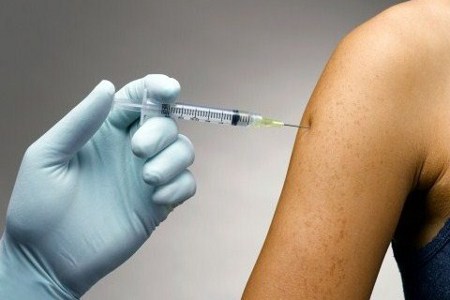Top 10 Facts about Cervical Cancer
2 Comments
2nd Leading Cause of Cancer Deaths
Worldwide, cervical cancer is the second leading cause of cancer deaths among women. In the United States, gynecological cancers, including cervical cancer, are the fourth leading cause of cancer deaths among women. It is estimated that 12,710 new cases of cervical cancer will be diagnosed in the U.S in 2011. Photo: Getty Images

Forms in the Cervix
Cervical cancer forms in the tissue of the cervix, which is the lower part of the uterus that opens to the vagina. Usually, it is a slow growing cancer that may not have symptoms. It can be detected with a regular Pap test. A Pap test is a procedure done during a gynecological exam. Cells are scraped from the cervix and examined under a microscope. Photo: Getty Images

HPV Causes Cervical Cancer
Almost all cases of cervical cancer are caused by the human papillomavirus or HPV. High-risk HPV leads to cervical cancer. Approximately, 15 high-risk types have been identified, including HPV types 16 and 18, which account for about 70% of all cases of cervical cancer. HPVs are a group of more than 150 related viruses of which, more than 40 types are sexually transmitted. Photo: Getty Images

Most HPV Cases Clear Up Naturally
In 90% of cases of genital human papillomavirus, the immune system clears the virus naturally within two years. However, in certain cases of high-risk HPV, the infection remains and abnormal cells develop in the lining of the cervix. If these abnormal cells are not detected early, they become precancerous and eventually cancerous. Photo: Getty Images

Smoking Increases Risk
In addition to high-risk human papillomavirus exposure, smoking doubles a woman’s chance of developing cervical cancer. There is a higher risk of developing cervical cancer among women who have AIDS, suppressed immune systems, have had or currently have chlamydia, are overweight, consume a diet low in fruits and vegetables, or take oral contraceptives longer than five years. The risk decreases after birth control pills are stopped. Other risk factors include a family history of cervical cancer, a full-term pregnancy before the age of 17 and three or more full-term pregnancies. Photo: Getty Images

Commonly Diagnosed Between 35-55 Years Old
Cervical cancer tends to develop during midlife. Most women are diagnosed between the ages of 35 and 55 years of age. Approximately 20 percent of diagnoses are made after the age of 65. Rarely, cervical cancer occurs in women under the age of 20. Photo: Getty Images

Early-Stage Cancer Symptoms are Rare
Generally, precancerous cervical cell changes and early stages of cervical cancer do not cause symptoms. Abnormal vaginal bleeding, such as bleeding between regular menstrual periods or after sexual intercourse, pelvic pain not related to your menstrual cycle, and an unusual vaginal discharge are symptoms of advanced cervical cancer. Photo: Getty Images

Detected During Pap Test
Cervical cancer is detected with a Pap test. The HPV DNA test determines whether or not a woman has an infection with any of the high-risk HPV types. This test cannot indicate whether the infection is new or persistent. Colposcopy and endocervical curettage are two procedures done to obtain specimens of cervical tissue to check for signs of cancer. Photo: Getty Images

Highly Preventable Cancer
Cervical cancer ranks among the most preventable cancers. Two vaccines, Cervarix and Gardasil, are available to protect women against most types of HPV that cause cervical cancer. Gardasil prevents genital warts and cervical cancer caused by HPV types 6,11,16 and 18 in girls and young women ages 9 through 26. It is also used to prevent genital warts caused by HPV types 6 and 11 in boys and young men ages 9 through 26. The CDC recommends the vaccine for all girls ages 11 to 12 years old. Gardasil works best when given before an individual becomes sexually active and potentially exposed to HPV. The vaccine is also recommended for young women between the ages of 13 and 25 who have not yet been vaccinated or completed all booster shots. Photo: Getty Images

Prognosis is Variable
Prognosis depends on a woman’s age and general health, the stage or advancement of the cancer, the type of cancer, and the size of the tumor. Surgery, radiation therapy and chemotherapy are the three treatment options. The choice of a treatment depends on the stage and size of the tumor, a woman’s age, and her desire to become pregnant. Photo: Getty Images
Add a Comment2 Comments
Technically Gardasil does not have a booster shot. The vaccine is administered in a series of three shots similar to the DPT that infants receive for protection against Diptheria, Pertussis and Tetanus which then has a separate booster later on. In addition Gardasil does not protct against most types of HPV that cause cancer. Instead, it protects against two of the high risk strains which cause 70% of cervical cancers. Aside from cervical dysplasia and/or cancer prevention, the vaccine also protects against vaginal, vulvar, penile and anal dysplasias and/or cancer.
August 10, 2011 - 4:12amThis Comment
Depending upon which research you utilize, the percentage of individuals whose immune system fails to control the virus such that it enters a dormancy state ranges from 15 to 40%. Most research states 30% of HPV infections will not resolve on their and persist, potentially resulting in abnormal effects of the cells causing dysplasia which can further progress to cancer in many cases if untreated.
August 10, 2011 - 4:00amThis Comment